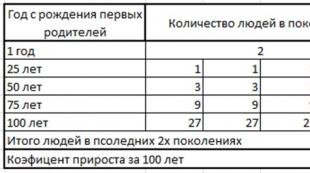The acoustic signs of the voice depend on what. Diagnostics and correction of violations. Revealing vocal features
Chapter 1. Basic concepts and physical parameters used to assess and characterize voice
Voice is a collection of sounds produced by the human vocal apparatus, which can be varied. A person can scream, moan, imitate various sounds, and most importantly, speak or sing. That is why any sound of human speech can be objectively analyzed with great accuracy, since it is a physical phenomenon studied by acoustics.
Sound in acoustics is understood as the propagation of vibrations, i.e. waves in an elastic medium (LB Dmitriev et al., 1968, 1990). Phonation is carried out in the air, in other words, the sound of a voice is the vibration of air particles, propagating in the form of vibration of waves of condensation and rarefaction. During speech, sound vibrations pass not only through the airways to the outer space, but also through the internal tissues of the body, causing vibrations in the chest and head.
The source of the voice is a person's vocal folds, which are tense when they approach each other and begin to vibrate (Fig. 13). This is the reason for the occurrence of periodic thickening and rarefaction of the air stream, occurring as a result of increased under-lining pressure. Sound waves, originating in the larynx, propagate through the tissues surrounding the larynx and down and up the airways. Thus, they only partially exit into the external space through the mouth opening, and only part of the sound energy generated in the larynx eventually reaches the listener's ear. Therefore, speaking about the human voice, it is necessary to take into account the propagation of sound not only inside the body, but also in the outer space.
Tone sounds occur with periodic vibrations with a certain frequency. This periodicity gives rise to the sensation of height in the auditory organ. Noises are
non-periodic fluctuations and therefore do not have a certain height.
The pitch is determined by the frequency oscillatory movements: the more frequent the periodic vibrations of the air, the higher the sound. The place where the altitude characteristics of sound originate is the larynx - the vocal folds of a person. The pitch depends on how many closings and openings the folds carry out in the course of their vibrations and how many portions of thickened underfold air they will pass, respectively. The pitch of the voice is determined by the size and tension of the vibrating body (vocal folds). It is easy to imagine that a thin string on a guitar or violin makes a high sound, while a large string produces a low sound. This explains the difference in pitch between children and adults. The child's vocal folds are short and thin, which explains the high voice. During puberty, the length of the vocal folds increases, as a result of which the tonality of the sound decreases.
The distance between two adjacent waves is called the wavelength (LB Dmitriev et al., 1990). Oscillation frequency and wavelength are inversely proportional. Their product is always 342 m / s, therefore, knowing the vibration frequency, you can easily calculate the wavelength, and vice versa. Thus, the wavelength reflects the same quality as the frequency, i.e. the pitch of the sound. Long waves and infrequent vibrations are characteristic of low sounds, short waves and frequent vibrations are characteristic of high sounds.
The wavelengths are expressed in meters, and the frequency of oscillations is expressed in the number of total oscillations (periods) per second, the so-called hertz (Hz). A period is understood as a time of complete oscillation. The lower the oscillation frequency, the longer the period of each oscillation.
Sound power, or sound pressure level, is measured in decibels (dB). There are two concepts: “intensity” is a characteristic of the level of sound pressure produced by the speaker, and “loudness” is the subjective perception of oscillatory movements, their summation amplitude by the listener. Amplitude - the swing of the oscillatory movement, which does not depend on its frequency. During exhalation, the vocal folds come closer together, create an obstacle to the exhaled air, which sets them in motion, as a result of which they begin to vibrate. If the string on the piano is struck lightly with a hammer, and then struck hard, the pitch will remain stable, only the strength of the vibrations of the string will change, i.e. the force of jolts with which the string will press on the surrounding air particles. The range of oscillations of air particles in this case will be significant, and the sound for us will be subjectively louder. The strength of the sound of the voice, as well as its height, increases with an increase in the subglottic pressure in the larynx. The more air portions break through the glottis with greater pressure, the higher the energy they carry, the greater the degree of thickening and the following rarefaction, i.e. the amplitude of vibration of air particles is stronger and, accordingly, their pressure on the tympanic membrane. The increased lining pressure serves as an energy reservoir that feeds the resulting sound energy. However, only a small part of the energy under the lining pressure is transferred to sound. In this case, the vocal folds play the role of a tap periodically opening with a sound frequency, releasing portions of compressed air into the oropharyngeal canal. In addition, the muscles of the larynx, together with the muscles involved in exhalation, determine the increase in subglottic pressure. Ultimately, the acoustic energy of the sound of the larynx is the result of the work of the respiratory and laryngeal muscles. In the future, this sound energy is only wasted and never increases.
The strength of the sound waves generated by the vibrations of the vocal folds then quickly decreases. The efficiency of the vocal apparatus is very small. According to the data given by Yusson, only 1 / 10-1 / 50 of the sound energy generated in the larynx comes out of the mouth and nasal cavity. This means that the bulk of the energy is absorbed inside the body, causing vibration in the tissues of the head, neck and chest.
Since the efficiency of the vocal apparatus is small, great importance acquire all the mechanisms that can increase it. In this regard, the formulation of the voice presupposes the formation and development of its natural qualities.
The most difficult parameter of a voice is its timbre, or individual coloration. Musical tones, like most of the sounds around us, are complex tones, consisting of many vibrations of different frequencies and strengths. In a complex sound, a basic tone is distinguished, which determines the pitch of a complex sound, and partial tones, or overtones, the sum of which creates a completely individual timbre. Timbre is determined by the combination of the strength and pitch of the voice, tones and noises that arise during the phonation process. The final shaping of the timbre of the voice takes place in the resonators.
A resonator, from the point of view of acoustics, is a cavity with certain physical characteristics (LB Dmitriev et al., 1968, 1990). The pitch depends on the volume of air, the shape of the resonator, and the size of the outlet; it is called the resonator's own height. The smaller the resonator volume, the higher its own tone; the smaller the outlet, the lower the pitch.
In the human vocal apparatus there are many cavities and tubes that provide resonance: trachea, bronchi; the cavity of the larynx, pharynx, mouth, nasopharynx, nose, paranasal sinuses. Some of them are unchanged in shape and size in an adult (paranasal sinuses, nasal cavity), therefore, they always intensify the same overtones; others are mobile and easily change their shape and size (oral cavity, pharynx, supraglottic larynx), due to which the original sound can vary over a wide range by resonator amplification of certain groups of overtones.
The resonators are conventionally distinguished: the upper one - ensures the purity and flight of the voice, the intelligibility of speech and chest - determines the power and strength of the sound.
Physiologists have proved by numerous studies that the irritation of the airway receptors by the air current affects the respiratory center, which regulates the breathing process, the depth, and the frequency of respiratory movements.
A prerequisite for the implementation of the phonation process is the preservation of physiological respiration. Respiratory movements (inhalation and exhalation) occur in a strict sequence and are regulated by the respiratory center of the medulla oblongata (OL Badalyan, 1998).
The child's breathing changes in its development. In a newborn, due to the perpendicular position of the ribs in relation to the spine, the rib cage is raised (the ribs cannot fall) and almost does not expand when entering - only diaphragmatic breathing works. In the future, the ribs take a saber shape, the chest drops. By the age of 3-7, conditions are created for chest breathing. With the development of the shoulder girdle, chest breathing becomes dominant. But since the ribs of a preschooler are less inclined than that of an adult, his breathing is largely shallow.
The rapid breathing pulse disrupts the rhythm and fluency of pronunciation of words and phrases, which, in turn, leads to distortion of sounds.
Due to the slight excitability of the respiratory center and the underdevelopment of nervous regulation, any physical stress and a slight increase in temperature increase the child's breathing, disrupt his rhythm, and, consequently, increase speech imperfection. Finally, the inability of babies to breathe through their mouths also introduces a certain disorganization in pronunciation - omissions of sounds, delays in their pronunciation, pronunciation while inhaling (A.N. Gvozdev, 1961; M.E. Khvatsev, 1997).
The following types of breathing are distinguished:
=> Surface
=> Breast
=> Lower rib
Superficial clavicular (clavicular, upper thoracic) - breathing excursions are performed by expanding and raising the upper chest, and the diaphragm passively follows these movements, the stomach is drawn in for inhalation, and the upper chest, clavicle, and sometimes the shoulders rise noticeably.
Pectoral - inhalation is produced mainly by expanding and raising the lower chest. It is not an independent type, since in this case the diaphragm is necessarily included in the work, and can be considered only an option.
Lower rib-diaphragmatic breathing, in which the chest and diaphragm are actively involved in work, is the most physiological.
It has already been mentioned that normal voice formation is impossible without correct breathing technique.
=> soft - breathing and switching on of the vocal folds occur simultaneously, which ensures both intonational accuracy, and calm, smooth, without jerk or aspiration, the beginning of the sound, and its best timbre.
Voice- This is the sound that is obtained under the pressure of exhaled air when vibrating in the larynx of strained vocal cords close to each other. The main qualities of any voice are strength, pitch, timbre. A well-tuned voice is also characterized by such properties as euphoniousness, flightiness, mobility and variety of tone.
The strength of the voice Is its loudness, which depends on the activity of the respiratory and speech organs. A person should be able to vary the strength of his voice depending on the conditions of communication. Therefore, it is equally necessary to be able to speak both loudly and quietly.
Voice pitch- this is its ability to tonal changes, that is, its range. An ordinary voice is characterized by a range of one and a half octaves, however, in everyday speech, a person most often uses only 3-4 notes. Expanding the range makes speech more expressive.
Voice timbre- a unique individual color, which is due to the structure of the speech apparatus, mainly by the nature of the overtones formed in the resonators - lower (trachea, bronchi) and upper (oral cavity and nasal cavity). If we cannot arbitrarily control the lower resonators, then the use of the upper resonators can be improved.
Euphonious voice- the purity of its sound, the absence of unpleasant overtones (hoarseness, hoarseness, nasal, etc.). The concept of euphony includes, first of all, sonority. The voice sounds loud when it resonates in the front of the mouth. If the sound is formed near the soft palate, it turns out to be dull and dull. The soundness of the voice also depends on the concentration of the sound (its concentration at the front teeth), on the direction of the sound, as well as on the activity of the lips.
The euphoniousness of the voice also implies the freedom of its sounding, which is achieved by the free work of all organs of speech, the absence of tension, muscle clamps. This freedom comes at the cost of long exercise. The euphoniousness of the voice should not be equated with the euphony of speech.
The euphony of speech- this is the absence in speech of a combination or frequent repetition of sounds that cut the ear. The euphony of speech presupposes the most perfect combination of sounds, convenient for pronunciation and pleasing to the ear.
For example, it causes a cacophony (that is, it is rated as bad-sounding) repetition within a phrase or a phrase of sibilant and hissing sounds without special stylistic purposes: "there are many students in our class who are conscientiously preparing for upcoming exams, but there are also quitters"; stringing words with several consonants in a row: "the gaze is nobler than all the senses"; it is not recommended to construct phrases in such a way as to produce a gaping vowel: "and in John." However, the problem of its euphoniousness does not apply to the technique of speech.
Mobility of the voice- this is his ability to change without tension in strength, height, pace. These changes should not be involuntary; for an experienced speaker, a change in certain qualities of the voice always pursues a specific goal.
Voice tone- emotionally expressive coloration of the voice, contributing to the expression in the speaker's speech, his feelings and intentions. The tone of speech can be kind, angry, enthusiastic, formal, friendly, etc. It is created by means such as increasing or decreasing the strength of the voice, pauses, speeding up or slowing down the tempo of speech.
Speech rate- the speed of pronouncing elements of speech (sounds, syllables, words). The absolute rate of speech depends on the individual characteristics of the speaker, the characteristics of his emotional state and the situation of communication, the style of pronunciation
The rate of speech is not a direct property of the person's voice itself, however, the ability to vary, if necessary, the speed of pronouncing words and phrases can also be attributed to those skills, which should be improved by the discipline "Speech Technique".
Intonation- this is the rhythm-melodic structure of speech. Intonation includes: pitch, strength, tempo, stress and pause. Means of expressiveness of intonation are conventionally divided into logical and emotional. The main means of logical expressiveness of intonation are logical pause, logical stress, logical melody and logical perspective.
With emotional intonation, words are saturated with emotional content, provided that a thought is properly assessed and one's attitude towards it is manifested. At the same time, distinctly tense emotional stress and pauses appear in intonation, due to feelings, mood, desire. They do not always coincide with logical ones, but such a coincidence is desirable.
The human voice is made up of a set of sounds that are diverse in their characteristics, which are formed with the participation of the vocal apparatus. The source of the voice is the larynx with oscillating vocal folds. The distance between the vocal folds is called the glottis. When inhaling, the glottis is completely open and takes the form of a triangle with an acute angle at the thyroid cartilage (Fig. 1). In the expiratory phase, the vocal folds come closer together, but at the same time they do not completely close the lumen of the larynx.
At the moment of phonation, i.e., sound reproduction, the vocal folds begin to vibrate, letting in portions of air from the lungs. During normal examination, they seem to be closed, since the eye does not pick up the speed of oscillatory movements (Fig. 2).
The human voice, its acoustic properties, the mechanisms of its generation are studied by a variety of sciences - physiology, phonetics, phoniatrics, speech therapy, etc. gives clear characteristics of each sound reproduced. According to acoustics, sound is the propagation of vibrations in an elastic medium. A person both speaks and sings in the air, therefore the sound of a voice is the vibration of air particles propagating in the form of waves of thickening and rarefaction, like waves on water, at a speed of 340 m / s at a temperature of + 18 ° C.
Among the sounds around us, tones and noises are distinguished. The former are generated by periodic oscillations of the sound source with a certain frequency. The frequency of oscillations creates a sensation of pitch in our auditory organ. Noises appear with random vibrations of various physical nature.
Both tone and noise sounds appear in the human vocal apparatus. All vowels are tonal, and voiceless consonants are noise. The more often periodic oscillations occur, the higher the sound we perceive. Thus, pitch of sound - this is subjective perception by the organ of hearing of the frequency of oscillatory movements. The quality of the pitch depends on the frequency of vibrations of the vocal folds in 1 s. How many closings and openings the vocal folds carry out in the process of their oscillations and how many portions of thickened sub-lining air they pass through, this is also the frequency of the born sound, i.e. pitch. The frequency of the main tone is measured in hertz and can, in ordinary colloquial speech, vary from 85 to 200 Hz for men, and from 160 to 340 Hz for women.
Changing the pitch of the main tone creates expressiveness of speech. One of the components of intonation is melody - the relative changes in the pitch of the main tone of sounds. Human speech is very rich in changes in melodic pattern: declarative sentences are characterized by a decrease in tone at the end; interrogative intonation is achieved by significantly raising the main tone on the word containing the question. The main tone always rises on the stressed syllable. The absence of a noticeable, changing melody of speech makes it less expressive and usually indicates some kind of pathology.
To characterize a normal voice, there is such a concept as tone range - voice volume - the ability to produce sounds within a certain range from the lowest tone to the highest. This property is individual for each person. The tonal range of a spoken voice in women is within one octave, in men it is slightly less, i.e. the change in the fundamental tone during a conversation, depending on its emotional coloring, fluctuates within 100 Hz. The tonal range of the singing voice is much wider - the singer must have a two-octave voice. Singers are known whose range reaches four and five octaves: they can take sounds from 43 Hz - the lowest voices - up to 2,300 Hz - high voices.
The power of the voice, its power,depends on the intensity of the vibration amplitude of the vocal folds and is measured in decibels, the greater the amplitude of these vibrations, the stronger the voice. However, to a greater extent it depends on the sub-lining air pressure exhaled from the lungs at the time of phonation. That is why, if a person is going to shout loudly, he takes a breath first. The strength of the voice depends not only on the amount of air in the lungs, but also on the ability to spend exhaled air, maintaining a constant sub-lining pressure. The usual spoken voice, according to different authors, ranges from 40 to 70 dB. The singers' voice has 90-110 dB, and sometimes reaches 120 dB - the noise power of an aircraft engine. Human hearing has adaptive capabilities. We can hear quiet sounds against a background of strong noise, or, finding ourselves in a noisy room, at first we do not distinguish anything, then we get used to it and begin to hear spoken speech. However, even with the adaptive capabilities of human hearing, strong sounds are not indifferent to the body: at 130 dB, a pain threshold occurs, 150 dB is intolerance, and a sound power of 180 dB is fatal for a person.
Of particular importance in characterizing the strength of the voice is dynamic range - the maximum difference between the softest (piano) and loudest (forte) sounds. Large dynamic range (up to 30 dB) - necessary condition for professional singers, but it is important in the spoken voice and for teachers, as it gives speech more expressiveness.
If the coordination relationship between the tension of the vocal folds and air pressure is disturbed, the voice power is lost and its timbre changes.
Sound timbre is an essential characteristic of the voice. By this quality of it, we recognize familiar people, famous singers, not yet seeing them with our own eyes. In human speech, all sounds are complex. Timbre reflects their acoustic composition, i.e. structure. Each sound of a voice consists of a fundamental tone, which determines its pitch, and numerous additional or overtones higher than the fundamental tone, frequency. The frequency of the overtones is two, three, four, and so on, times greater than the frequency of the fundamental. The appearance of overtones is due to the fact that the vocal folds oscillate not only along their length, reproducing the main tone, but also in their individual parts. It is these partial vibrations that create overtones, which are several times higher than the main tone. Any sound can be analyzed on a special device, divided into separate constituent overtones. Each vowel in its overtone composition contains areas of amplified frequencies that characterize only this sound. These areas are called vowel formants. There are several of them in the sound. To distinguish it, the first two formants are sufficient. The first formant - the frequency range of 150-850 Hz - during articulation is provided by the degree of elevation of the tongue. The second formant - the range of 500-2,500 Hz - depends on the vowel series. The sounds of ordinary spoken speech are located in the range of 300-400 Hz. The quality of the voice, such as its sonority and flightiness, depend on the frequency regions in which overtones appear.
The study of the timbre of the voice is engaged in both in our country (V.S.Kazansky, 1928; S.N. Rzhevkin, 1956; E.A.Rudakov, 1864; M.P. Morozov, 1967), and abroad (V. Bartholomew, 1934; R. Husson, 1962; G. Fant, 1964). Timbre is formed due to the resonance that occurs in the cavities of the mouth, pharynx, larynx, trachea, bronchi. Resonance is a sharp increase in the amplitude of forced oscillations that occur when the oscillation frequency of an external influence coincides with the frequency of natural oscillations of the system. During phonation, resonance enhances individual overtones of the sound formed in the larynx, and causes the coincidence of air vibrations in the cavities of the chest and the extension tube.
The interconnected system of resonators not only enhances the overtones, but also affects the very nature of the vibrations of the vocal folds, activating them, which in turn causes even greater resonance. There are two main resonators - head and chest. The head (or upper) cavity is understood to be the cavity located in the front of the head above the palatine vault - the nasal cavity and its paranasal sinuses. When using the upper resonators, the voice acquires a bright flight character, and the speaker or singer has the feeling that the sound is passing through the facial parts of the skull. The research of R. Jussen (1950) proved that vibration phenomena in the head resonator excite the facial and trigeminal nerves, which are associated with the innervation of the vocal folds and stimulate the vocal function.
During chest resonance, vibration of the chest occurs, here the trachea and large bronchi serve as resonators. In this case, the timbre of the voice is "soft". A good, full-fledged voice simultaneously sounds the head and chest resonators and stores sound energy. The oscillating vocal folds and resonator system increase the efficiency of the vocal apparatus.
Optimal conditions for the functioning of the vocal apparatus appear when a certain resistance is created in the supra-fold cavities (extension tube) for portions of the sub-fold air passing through the oscillating vocal folds at the time of phonation. This resistance is called return impedance. When a sound is formed "in the region from the glottis to the oral opening, the return impedance manifests its protective function, creating in the reflex adaptation mechanism the preconditions for the most favorable, rapidly increasing impedance." The return impedance precedes phonation by thousandths of a second, creating the most favorable sparing conditions for it. At the same time, the vocal folds work with low energy consumption and a good acoustic effect. The return impedance phenomenon is one of the most important protective acoustic mechanisms in the operation of the vocal apparatus.
1) first there is a slight exhalation, then the vocal folds close and begin to vibrate - the voice sounds as if after a slight noise. This method is considered aspirated attack;
The human voice is made up of a set of sounds that are diverse in their characteristics, which are formed with the participation of the vocal apparatus. The source of the voice is the larynx with vibrating vocal cords. The larynx is a tube that connects the windpipe (trachea) and the pharynx. The walls of the larynx consist of cartilage: cricoid, thyroid, supraopharyngeal and 2 arytenoid. The muscles of the larynx are divided into external and internal, external muscles connect the larynx with other parts of the body, raise and lower it. The internal muscles, during their contraction, set in motion certain cartilages of the larynx, as well as the vocal cords, which expands or narrows the glottis. In the upper part of the larynx there are false vocal cords, the muscle fibers in which are poorly developed (in some cases, when vocal disorders are eliminated in patients, a pseudo-ligamentous or pseudofold voice is formed). Below the false ones are the true vocal cords, which protrude in the form of folds and mainly consist of muscle fibers, the distance between the vocal cords is called the glottis.
When inhaling, the glottis is completely open and takes the shape of a triangle with the apex at the thyroid cartilage. In the expiratory phase, the vocal folds come closer together, but do not close the lumen of the larynx. During phonation, that is, in the process of voice formation, the vocal folds begin to vibrate, letting in portions of air from the lungs. During normal examination, they seem to be closed, since the eye does not pick up the speed of oscillatory movements. In a whisper, the vocal folds open in the shape of a triangle. The vocal folds do not vibrate, and the air leaving the lungs meets the resistance of the organs of articulation in the form of cracks and bows, which creates a specific noise. The innervation of the larynx is carried out by the sympathetic nerve and the 2nd branches of the vagus nerve - the upper and lower laryngeal nerve.
The concept of sound is considered in the mainstream of various sciences. Among the sounds around us, tones and noises are distinguished. Tone sounds are generated by periodic vibrations of a sound source with a certain frequency, noises appear with random vibrations of various physical nature. Both tonal sounds and noises (vowel sounds and voiceless consonants) are formed in the human vocal apparatus.
1) Sound pitch- this is the subjective perception of the organs of hearing of the frequency of oscillatory movements. In colloquial speech in men, the frequency of the fundamental tone of the voice varies from 85 to 200 Hz, and in women from 160 to 340 Hz. Voice pitch modulation provides the expressiveness of oral speech (7 types of intonation structures in Russian). The concept of a tonal range is distinguished, that is, the ability to produce sounds within certain limits, from the lowest tone to the highest. These opportunities and each person are individual. The singing voice has a wide range. It is obligatory to have a voice in the 2nd octave for vocalists. However, there are cases of possession of a voice in 4-5 octaves (sounds in the range of 43 - 2300 Hz).
2) The strength of the voice- is perceived objectively as the loudness of the sound and depends on the amplitude of the vibrations of the vocal cords, on the degree of the lining pressure of the air stream. In colloquial speech, the intensity of the voice is from 40 to 70 dB, the voice of singers is 90 - 110 dB, and in some cases it can reach 120 dB (the power of the noise of an aircraft engine).
Human hearing has adaptive capabilities, thanks to which you can listen to quiet sounds against the background of loud ones, or gradually get used to the noise and begin to distinguish sounds. However, even with this, loud sounds are not indifferent to human hearing - at 130 dB, the pain threshold sets in, 150 dB is intolerance, and 180 dB are fatal to humans.
They highlight the concept of the dynamic range of the voice, that is, the maximum difference between the quietest and loudest sound.
A wide range is important for singers (up to 30 dB), as well as for people of the vocal profession.
3) Voice timbre, that is, its individual painting. Timbre consists of the main tone of the voice and overtones, that is, overtones with a greater pitch. The appearance of these overtones is due to the fact that the vocal folds oscillate not only along their length, reproducing the main tone, but also in their individual parts. These partial vibrations create overtones that are several times higher than the main tone.
The head resonator, which includes the cavities of the facial part above the palatine fornix (the nasal cavity and its paranasal sinuses). The head resonator provides sonority, flightiness of the sound of the voice.
The chest cavity includes the rib cage, trachea and large bronchi, providing power and softness of the voice.
The source of the sound the human voice is larynx with vocal folds ... I
Sound pitch- subjective perception by the organ of hearing of the frequency of oscillatory movements.
Frequency the main tones measured in hertz and can vary in normal colloquial speech in men in the range from 85 to 200 Hz, in women - from 160 to 340 Hz. The expressiveness of speech depends on changes in the pitch of the main tone.
The strength of the voice
, its energy, power are determined by the intensity of the vibration amplitude of the vocal folds and
measured in decibels. The greater the amplitude of the oscillatory movements, the stronger the voice sounds.
Timbre, or coloring, sound is a characteristic of voice quality. It reflects the acoustic composition of complex sounds and depends on the frequency and strength of the vibrations.
Resonance
- a sharp increase in the amplitude of oscillations that occurs when the frequency of oscillations of the external force coincides with the frequency of natural oscillations of the system. During phonation, resonance enhances individual overtones of the sound that occurs in the larynx, and causes the coincidence of air vibrations in the cavities of the chest and the tube extension.
There are two resonators - the main one and the chest one.
1) / i] first there is a slight exhalation, then the vocal folds close and begin to vibrate. The voice sounds after a slight noise. This method is considered [i] an aspirated attack;
3. Basic functions of the voice. Characteristics of the spoken voice.
Many people owe much of their success to their voice. As with physical appearance, people judge a politician's voice within the first few seconds. It doesn't matter if you are a famous person or not. Despite the memorable appearance of some famous people remembering them, we first of all remember the voice.
The voice is an amazing tool for self-expression. It is known that any disease instantly leaves an imprint on the strength, timbre and pitch of a voice. Sadness and joy, like other emotions, are primarily conveyed by voice.
Under the influence of illness or constant overstrain, the vocal apparatus weakens. At the same time, for representatives of many professions, such as teachers, artists, announcers, lawyers, politicians, doctors, salespeople, etc., who "work" with a voice, this apparatus must always be "in good condition", that is, healthy, strong and rich in all shades. Very often, it is the violation of the voice that makes a person see a doctor.
Speech plays an important role in the life of society, performing communicative and informative functions. The voice conveys various experiences: joy, pain, fear, anger or delight. Its function is regulated by many nerve connections that coordinate the finest work of a large number of muscles. Thanks to the shades of voice color, you can influence the psyche of another person. A voice devoid of high frequencies seems to be muffled, creeping, "like from a barrel." And those who do not have low ones can be annoying, shrill and unpleasant. A beautiful, healthy voice should delight the hearing of others. However, problems can arise with it. It is believed that, due to their emotionality, women most often suffer from voice problems, and a housewife can also lose it.
What are the types of voice disorders?
In strength, timbre and pitch. In case of violation of the strength, the voice can be quickly depleted, too weak, or, conversely, excessively loud; timbre - hoarse, rough, guttural-sharp, dull, metallic or squeaky; heights - monotonous, low, etc.
Voice disorders affect the communicative function of the speech of children and their personality traits. Absent or impaired voice can cause problems in peer relationships due to communication difficulties. The guys are ashamed of their voice, sometimes they communicate with facial expressions and gestures. Imbalance, irritability, pessimism, aggression, etc. may appear. In the future, this leaves an imprint on the work and personal life of a growing up person.
HOW DO WE TALK?
Any elastic body in a state of vibration sets in motion particles of the surrounding air, from which sound waves are formed. These waves, propagating in space, are perceived by our ear as sound. This is how sound is formed in the nature around us.
In the human body, the vocal folds are such an elastic body. The sounds of speech and singing voices are formed by the interaction of vibrating vocal folds and breathing.
The process of speech begins with inhalation, during which air is pumped through the oral and nasal cavity, pharynx, larynx, trachea, bronchi into the lungs dilated at the entrance. Then, under the action of nerve signals (impulses) from the brain, the vocal folds close, the glottis closes. This coincides with the beginning of the exhalation. Closed vocal folds block the path of exhaled air, prevent free exhalation. The air in the sub-lining space, recruited during inhalation, is compressed under the action of the expiratory muscles, and sub-lining pressure arises. Compressed air presses on the closed vocal folds, that is, it interacts with them. Sound is produced.
We must never forget that people have very individual anatomical, physiological and psychological properties of the body, and hence the need for an individual approach to each person, and the uniqueness of the sound of each voice, its timbre, strength, endurance and other qualities.
How do we eat?
Sounds born at the level of the vocal folds from their interaction with breathing propagate through the air cavities and tissues lying both above and below the vocal folds.
Approximately 80% of the energy of the singing sound is extinguished when it passes through the surrounding tissues and is wasted on their shaking (vibration).
In the air cavities (in the supra-lining and sub-lining space), sounds undergo acoustic changes and are amplified. Therefore, these cavities are called resonators.
Distinguish between upper and chest resonators.
Upper resonators are all cavities above the vocal folds: the upper larynx, pharynx, oral and nasal cavities, and paranasal sinuses (head resonators).
The pharynx and oral cavity form the sounds of speech, increase the strength of the voice, and affect its timbre.
As a result of head resonance, the voice acquires "flightiness", composure, "metal". These resonators are indicators (pointers) of correct voice formation.
Breast resonance imparts fullness and spaciousness to the sound.
What is the difference between singing voice and speech? In singing, they use the entire available range of the voice, and in speech, only a part of it. Regardless of the voice (tenor, bass, baritone, soprano, mezzo), a person uses the middle segment of his voice, so
as it is more convenient to say here, he does not get tired.
The singing voice differs from the spoken one not only in range and strength, but also in timbre, that is, in a richer color.
4. Mechanisms of voice formation.
The diaphragm, lungs, bronchi, trachea, larynx, pharynx, nasopharynx, nasal cavity are actively involved in the mechanism of voice formation. The organ of voice formation is the larynx. When we speak, the vocal folds in the larynx close together. Exhaled air presses on them, causing them to vibrate. The muscles in the larynx contract in different directions to move the vocal folds. The result is an oscillation of the air particles above the folds. These vibrations, transmitted to environment are perceived as sounds of a voice. When we are silent, the vocal folds diverge to form an isosceles triangle of glottis.
Mechanism
voice formation (phonation) is as follows.
During phonation, the vocal folds are closed. A jet of exhaled air, breaking through the closed vocal folds, somewhat pushes them to the sides. Due to its elasticity, as well as under the action of the laryngeal muscles,
narrowing the glottis, the vocal folds return to the original, i.e. the middle position, so that, as a result of the continued pressure of the exhaled air stream, it again moves apart to the sides, etc. Closing and opening continues until the pressure of the voice-forming expiratory stream stops. Thus, during phonation, vibrations of the vocal folds occur. These vibrations occur in the transverse, not longitudinal direction, i.e. the vocal folds move inward and outward rather than up and down.
As a result of vibrations of the vocal folds, the movement of the stream of exhaled air turns over the vocal folds into vibrations of air particles. These vibrations are transmitted to the environment and perceived by us as the sound of a voice.
When whispering, the vocal folds do not close along their entire length: in the back, between them there is a gap in the form of a small equilateral triangle, through which an exhaled stream of air passes over the edges of the small triangular gap, causing noise. Which is perceived by us in the form of a whisper.
| |||||
| | |||||
|









